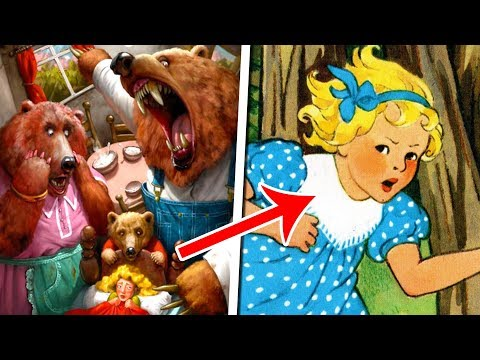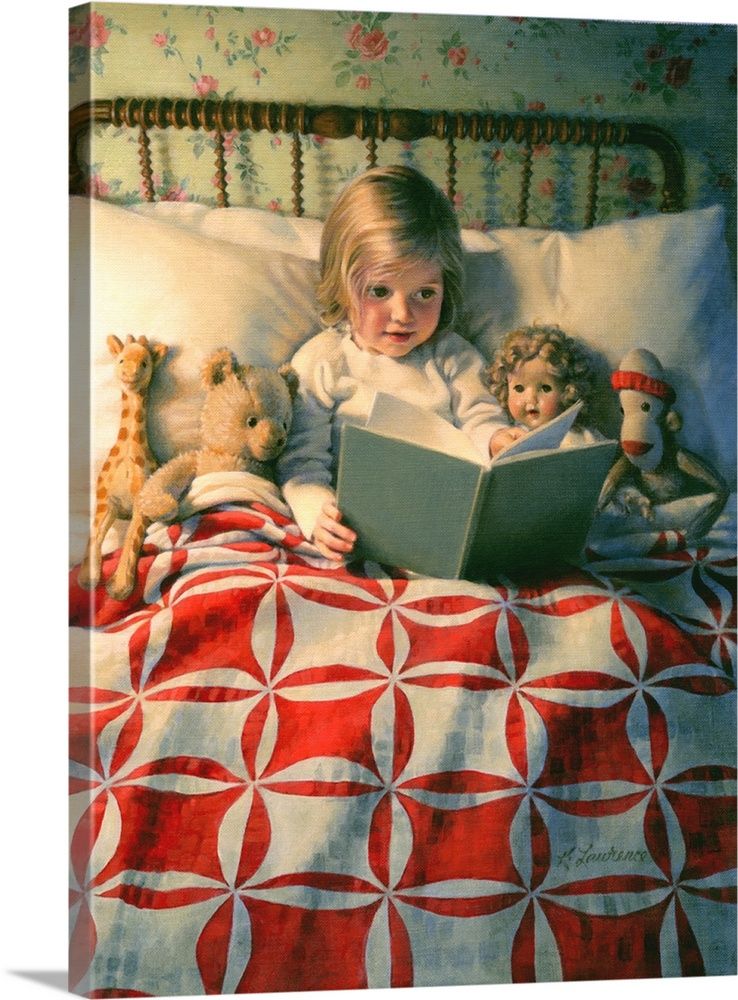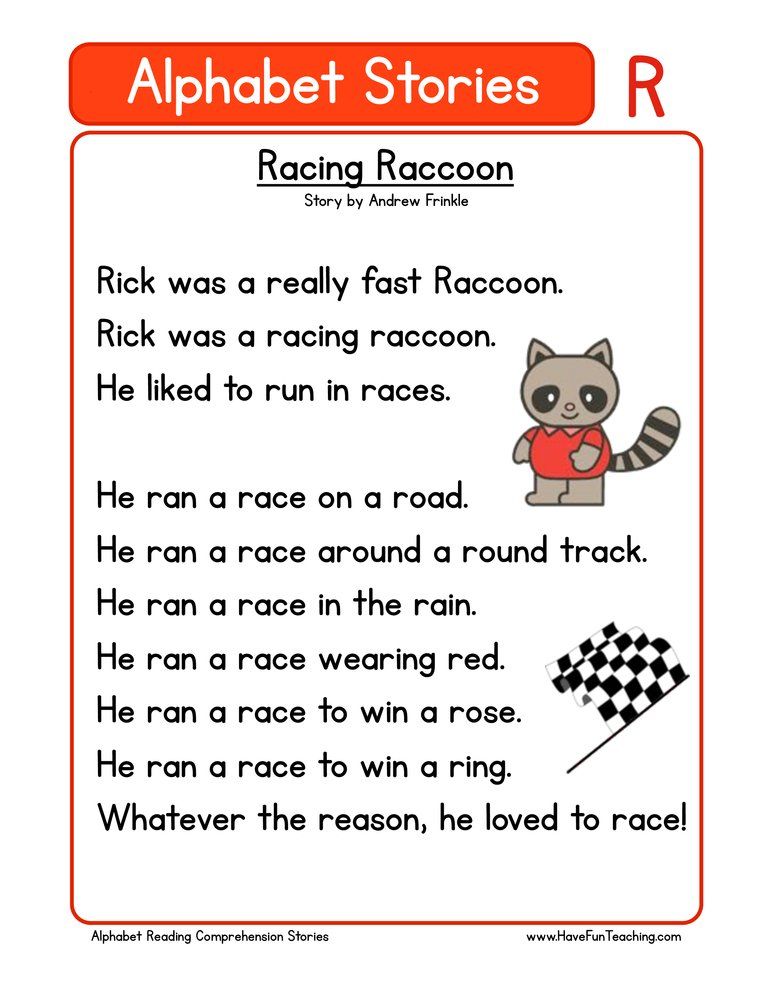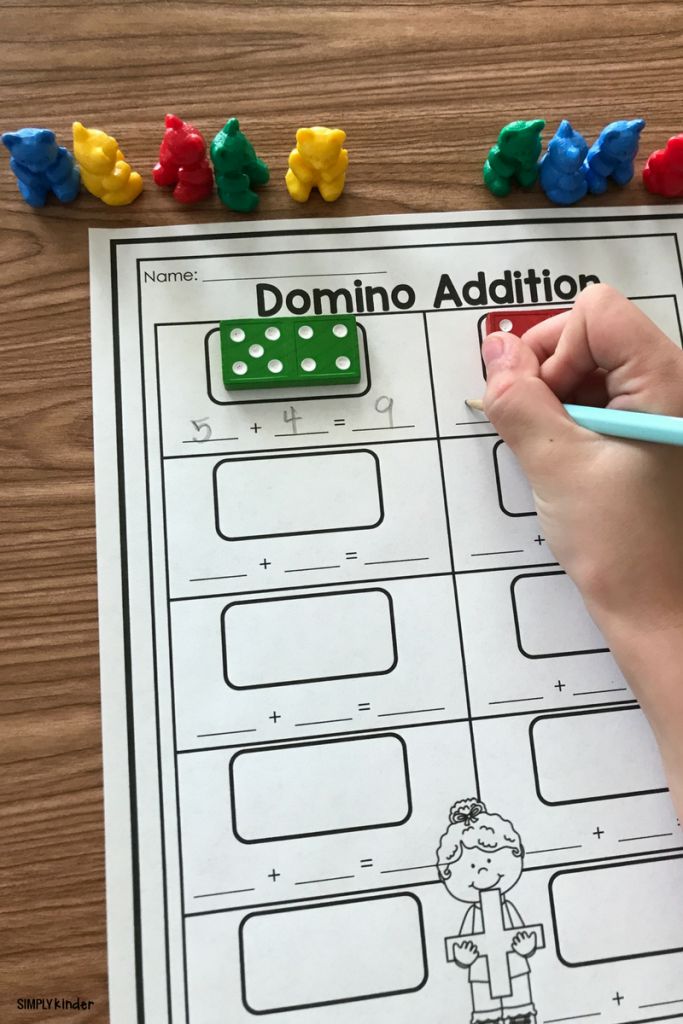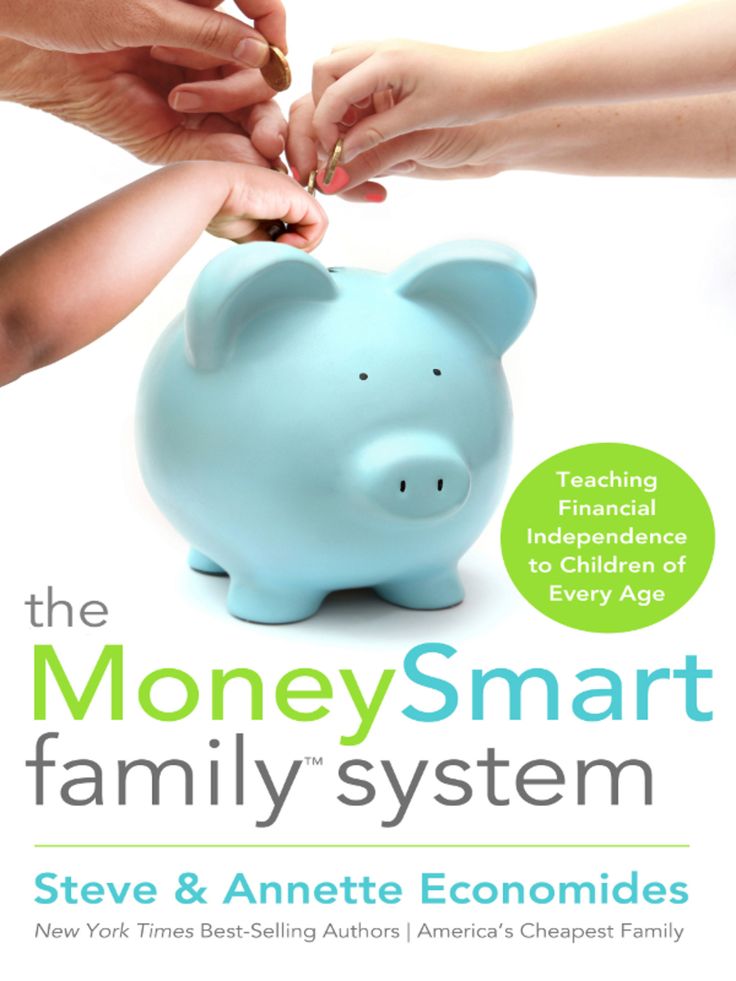The three bears original story
The Story of the Three Bears
English Fairy Tales: The Story of the Three BearsSacred Texts Legends and Sagas English Folklore Index Previous Next
Click to enlarge
ONCE upon a time there were Three Bears, who lived together in a house of their own, in a wood. One of them was a Little, Small, Wee Bear; and one was a Middle-sized Bear, and the other was a Great, Huge Bear. They each had a pot for their porridge, a little pot for the Little, Small, Wee Bear, and a middle-sized pot for the Middle Bear, and a great pot for the Great, Huge Bear. And they each had a chair to sit in; a little chair for the Little, Small, Wee Bear; and a middle-sized chair for the Middle Bear; and a great chair for the Great, Huge Bear. And they each had a bed to sleep in; a little bed for the Little, Small, Wee Bear; and a middle-sized bed for the Middle Bear; and a great bed for the Great, Huge Bear.
One day, after they had made the porridge for their breakfast, and poured it into their porridge-pots, they walked out into the wood while the porridge was cooling, that they might not burn their mouths, by beginning too soon to eat it. And while they were walking, a little old Woman came to the house. She could not have been a good, honest old Woman; for first she looked in at the window, and then she peeped in at the keyhole; and seeing nobody in the house, she lifted the latch. The door was not fastened, because the Bears were good Bears, who did nobody any harm, and never suspected that anybody would harm them. So the little old Woman opened the door, and went in; and well pleased she was when she saw the porridge on the table. If she had been a good little old Woman, she would have waited till the Bears came home, and then, perhaps, they would have asked her to breakfast; for they were good Bears--a little rough or so, as the manner of Bears is, but for all that very good-natured and hospitable. But she was an impudent, bad old Woman, and set about helping herself.
So first she tasted the porridge of the Great, Huge Bear, and that was too hot for her; and she said a bad word about that. And then she tasted the porridge of the Middle Bear, and that was too cold for her; and she said a bad word about that, too. And then she went to the porridge of the Little, Small, Wee Bear, and tasted that; and that was neither too hot nor too cold, but just right; and she liked it so well that she ate it all up: but the naughty old Woman said a bad word about the little porridge-pot, because it did not hold enough for her.
And then she went to the porridge of the Little, Small, Wee Bear, and tasted that; and that was neither too hot nor too cold, but just right; and she liked it so well that she ate it all up: but the naughty old Woman said a bad word about the little porridge-pot, because it did not hold enough for her.
Then the little old Woman sate down in the chair of the Great, Huge Bear, and that was too hard for her. And then she sate down in the chair of the Middle Bear, and that was too soft for her. And then she sate down in the chair of the Little, Small, Wee Bear, and that was neither too hard, nor too soft, but just right. So she seated herself in it, and there she sate till the bottom of the chair came out, and down she came, plump upon the ground. And the naughty old Woman said a wicked word about that, too.
Then the little old Woman went upstairs into the bed-chamber in which the three Bears slept. And first she lay down upon the bed of the Great, Huge Bear; but that was too high at the head for her.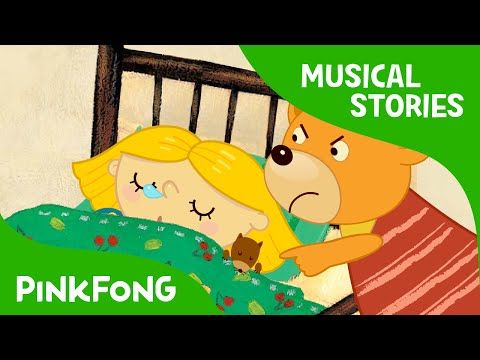 And next she lay down upon the bed of the Middle Bear, and that was too high at the foot for her. And then she lay down upon the bed of the Little, Small, Wee Bear, and that was neither too high at the head nor at the foot, but just right. So she covered herself up comfortably, and lay there till she fell fast asleep.
And next she lay down upon the bed of the Middle Bear, and that was too high at the foot for her. And then she lay down upon the bed of the Little, Small, Wee Bear, and that was neither too high at the head nor at the foot, but just right. So she covered herself up comfortably, and lay there till she fell fast asleep.
By this time the Three Bears thought their porridge would be cool enough, so they came home to breakfast. Now the little old Woman had left the spoon of the Great, Huge Bear, standing in his porridge.
'Somebody has been at my porridge!'
said the Great, Huge Bear, in his great, rough, gruff voice. And when the Middle Bear looked at his, he saw that the spoon was standing in it, too. They were wooden spoons; if they had been silver ones, the naughty old Woman would have put them in her pocket.
'Somebody has been at my porridge!'
said the Middle Bear in his middle voice.
Then the Little, Small, Wee Bear looked at his, and there was the spoon in the porridge-pot, but the porridge was all gone.
'Somebody has been at my porridge, and has eaten it all up!'
said the Little, Small, Wee Bear, in his little, small, wee voice.
Upon this the Three Bears, seeing that someone had entered their house, and eaten up the Little, Small, Wee Bear's breakfast, began to look about them. Now the little old Woman had not put the hard cushion straight when she rose from the chair of the Great, Huge Bear.
'Somebody has been sitting in my chair!'
said the Great, Huge Bear, in his great, rough, gruff voice.
And the little old Woman had squatted down the soft cushion of the Middle Bear.
'Somebody has been sitting in my chair!'
said the Middle Bear, in his middle voice.
And you know what the little old Woman had done to the third chair.
'Somebody has been sitting in my chair and has sate the bottom out of it!'
said the Little, Small, Wee Bear, in his little, small, wee voice.
Then the three Bears thought it necessary that they should make further search; so they went upstairs into their bed-chamber. Now the little old Woman had pulled the pillow of the Great, Huge Bear out of its place.
'Somebody has been lying in my bed!'
said the Great, Huge Bear, in his great, rough, gruff voice.
And the little old Woman had pulled the bolster of the Middle Bear out of its place.
'Somebody has been lying in my bed!'
said the Middle Bear, in his middle voice.
And when the Little, Small, Wee Bear came to look at his bed, there was the bolster in its right place, and the pillow in its place upon the bolster; and upon the pillow was the little old Woman's ugly, dirty head--which was not in its place, for she had no business there.
'Somebody has been lying in my bed--and here she is!'
said the Little, Small, Wee Bear, in his little, small, wee voice.
The little old Woman had heard in her sleep the great, rough, gruff voice of the Great, Huge Bear; but she was so fast asleep that it was no more to her than the roaring of wind or the rumbling of thunder. And she had heard the middle voice of the Middle Bear, but it was only as if she had heard someone speaking in a dream. But when she heard the little, small, wee voice of the Little, Small, Wee Bear, it was so sharp, and so shrill, that it awakened her at once. Up she started; and when she saw the Three Bears on one side of the bed, she tumbled herself out at the other, and ran to the window. Now the window was open, because the Bears, like good, tidy Bears as they were, always opened their bed-chamber window when they got up in the morning. Out the little old Woman jumped; and whether she broke her neck in the fall; or ran into the wood and was lost there; or found her way out of the wood, and was taken up by the constable and sent to the House of Correction for a vagrant as she was, I cannot tell.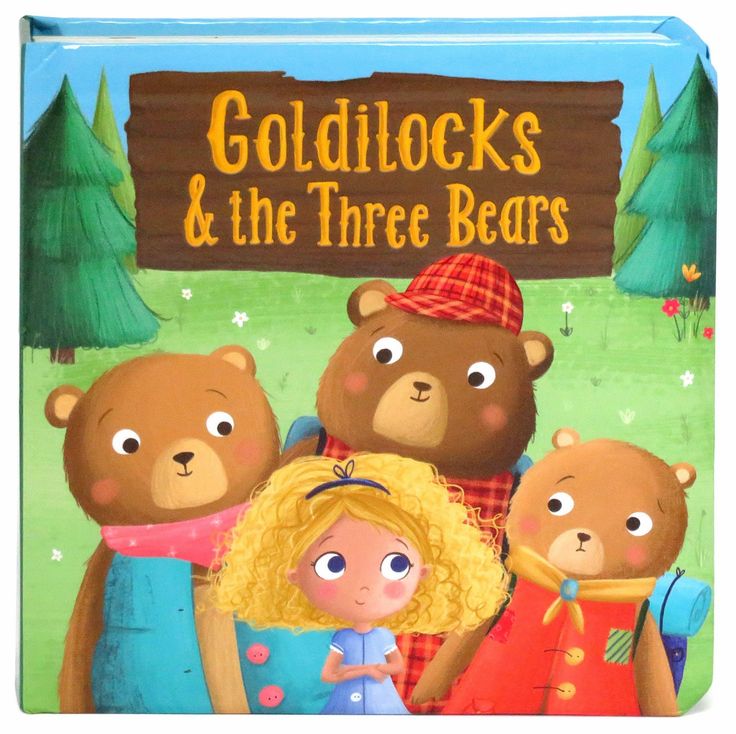 But the Three Bears never saw anything more of her.
But the Three Bears never saw anything more of her.
The Three Bears Before Goldilocks: The History of a Fairy Tale
The story of the Three Bears is a familiar one. A troublesome interloper breaks into the home of three bears. She samples food and breaks furniture before being sent on her way. But, did you know that the housebreaker was originally an old woman, not a little girl named Goldilocks? Or, that the first Three Bears were friends instead of Mama Bear, Papa Bear and Baby Bear?
The Three Bears started as an oral tale and was first written down almost 200 years ago. Over the decades, the story has changed and grown into the tale we know today. Our Osborne Collection of Early Children's Books has materials which reveal the history of The Three Bears story.
Eleanor Mure’s manuscript
Eleanor Mure wrote the first recorded version of The Three Bears story in 1831. Osborne Collection has Mure’s original manuscript, a handmade book created as a gift for her nephew Horace Broke.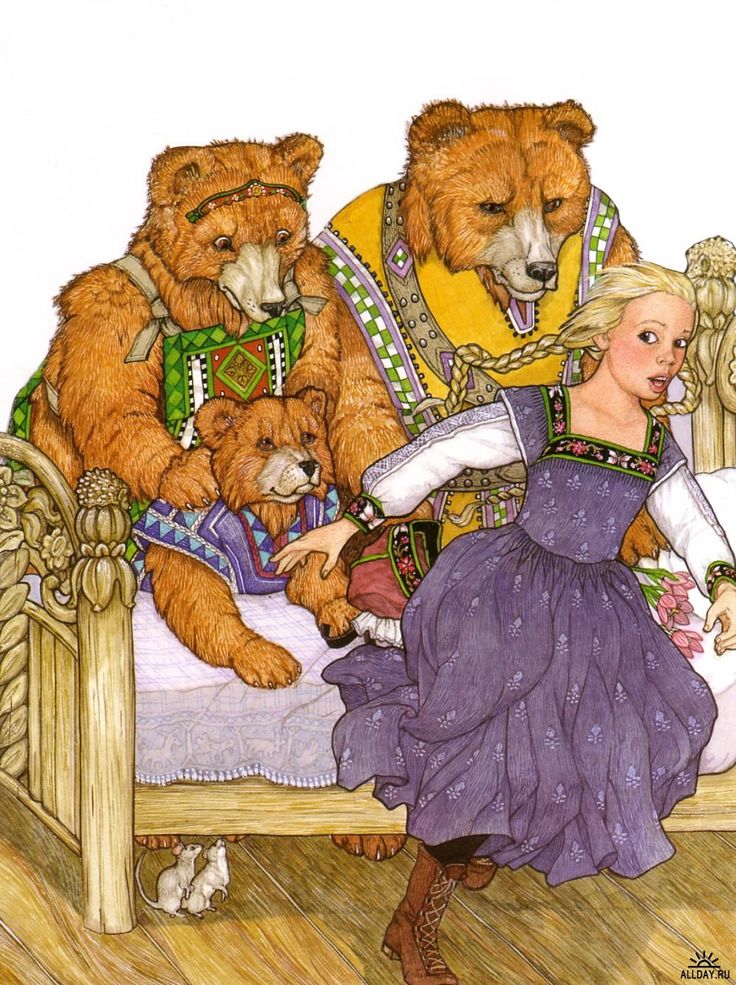 The story is set at Cecil Lodge, the Mure family estate in Hertfordshire, England. Mure's The Story of Three Bears (1831) (see digitized book or records for our physical copies) is told in verse and illustrated with original watercolours.
The story is set at Cecil Lodge, the Mure family estate in Hertfordshire, England. Mure's The Story of Three Bears (1831) (see digitized book or records for our physical copies) is told in verse and illustrated with original watercolours.
The Three Bears discover their milk has been drunk in The Story of the Three Bears (1831).
Described as “the celebrated nursery tale,” the story was shared orally by Mure’s family long before she set it to paper. In Mure’s telling, the Bears are not a family. They are three friends who “fancy a home amongst the dwellings of men.”
The Old Woman is discovered by the Three Bears in The Story of the Three Bears (1831).
Instead of a little girl, the Bears’ house is invaded by an old woman. Mure’s old woman meets a bad end. As punishment for housebreaking, the Bears try to burn and drown the old woman. When nothing works, they “chuck her aloft on St. Paul’s church-yard steeple.”
The Three Bears celebrate after throwing the old woman atop St./pic2627523.png) Paul's Cathedral in The Story of the Three Bears (1831).
Paul's Cathedral in The Story of the Three Bears (1831).
Robert Southey’s published story
In 1837, English poet Robert Southey released the first printed version of The Three Bears. The story appeared in Southey’s prose anthology The Doctor (1834-47). As with Mure's family, The Three Bears was a popular story among Southey’s family. Southey likely heard The Three Bears from his uncle, William Tyler. Tyler was illiterate, but had a great memory for folktales.
The bears' size difference is illustrated through font in Southey's The Three Bears (1837).
Southey’s story is the first version to discuss the Bears’ size. He introduces the Three Bears as Little, Small, Wee Bear; Middle Bear; and Great, Huge Bear. The story has no illustrations, but the Bears’ size is represented by typography. Great, Huge Bear speaks in large gothic letters. Little, Small, Wee Bear speaks in tiny italics.
Unlike Mure’s telling, the Southey’s bears do not punish the intruding old woman. Instead she makes an escape through an open window. Southey speculates that she might be “sent to the House of Correction” for vagrancy, or perhaps “she broke her neck in the fall.”
Instead she makes an escape through an open window. Southey speculates that she might be “sent to the House of Correction” for vagrancy, or perhaps “she broke her neck in the fall.”
The old woman samples the Bears' porridge. From George Nicol's verse adaptation of The Story of the Three Bears (1837) illustrated by Robert Hart.
Southey’s The Three Bears was an instant hit. Within months publisher George Nicol released his own version of The Story of the Three Bears (1837). Nicol’s story was in verse, but otherwise was a direct retelling of Southey’s version.
A little girl with metallic hair
In early tellings of The Three Bears, the protagonist was an old woman. But, in 1850 Joseph Cundall wrote the first retelling featuring a little girl. Cundall called his character Silver-Hair and justified the switch by saying “there are so many other stories of old women.” Published in A Treasury of Pleasure Books for Young Children (1850), Cundall’s retelling otherwise closely followed Southey’s version of The Three Bears.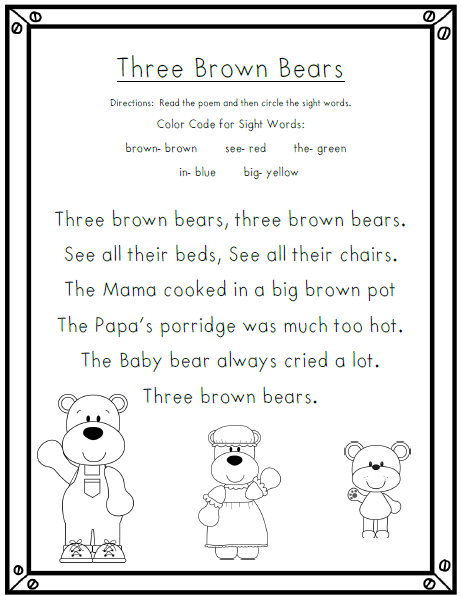
The Three Bears watch Silver-Hair sleep in A Treasury of Pleasure Books for Young Children (1850).
Following Cundall’s publication, little girl protagonists named Silver-Hair became a common feature of The Three Bears retellings. The character was sometimes called Silver-Locks, Golden Hair and other variant names.
Goldilocks popularized
The name Goldilocks was first used for the Bears' nemesis in two 1904 fairy tale anthologies. Old Nursery Rhymes and Stories (1904) and Old Fairy Tales for Children (1904) both feature "Little Goldilocks" as The Three Bears' intruder. It is possible that the name Goldilocks was inspired by an entirely different fairy tale. French fairy tale writer Madame d'Aulnoy's story The Beauty with Golden Hair is sometimes translated as The Story of Pretty Goldilocks.
The Three Bears confront Goldilocks in English Fairy Tales (1918).
In the 20th century, Goldilocks became the character's standard name.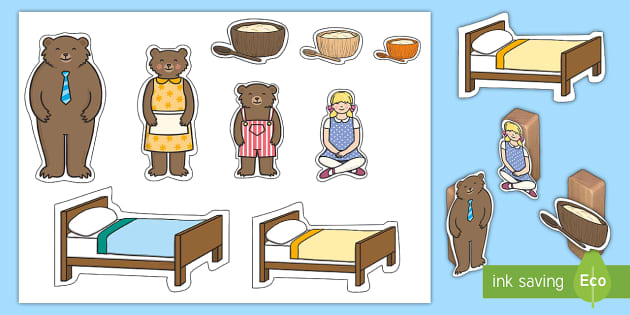 Popular fairy tale collections like Flora Annie Steel's English Fairy Tales (1918) used the Goldilocks name. Now the story is sometimes simply titled Goldilocks without any mention of The Three Bears.
Popular fairy tale collections like Flora Annie Steel's English Fairy Tales (1918) used the Goldilocks name. Now the story is sometimes simply titled Goldilocks without any mention of The Three Bears.
Modern variations
The Three Bears continues to be reimagined by writers and illustrators. The Bears have been portrayed as dinosaurs, panda bears, polar bears, rhinos and everything in between.
Goldilocks and the Three Bears: A Tale Moderne (2000) by Steven Guarnaccia combines the classic fairy tale with modernist art and design. In this version, Goldilocks breaks a "pint-sized" mid-century modern chair.
The Ghanaian Goldilocks (2014) by Tamara Pizzoli features Kofi, a little boy nicknamed Goldilocks. Instead of intruding on bears, he sneaks into the house of family friends. Pizzoli's version focuses on the story's moral message about good manners, while also exploring Ghanaian culture and traditions.
#Goldilocks: A Hashtag Cautionary Tale (2019) by Jeanne Willis and Tony Ross uses the story to teach internet safety. Their Goldilocks is an online video star. Her quest for views and likes goes too far when she sneaks into the Bears' home for video content.
Their Goldilocks is an online video star. Her quest for views and likes goes too far when she sneaks into the Bears' home for video content.
Further reading
- The Story of the Three Bears: The Evolution of an International Classic edited by Warren U. Ober (only available to read in-person at the Osborne Collection and Toronto Reference Library, though unavailable at the time of writing due to lockdown restrictions)
- The Classic Fairy Tales by Iona and Peter Opie
- The Annotated Classic Fairy Tales edited by Maria Tatar
The Adventures of a Girl and the Three Bears: aneitis — LiveJournal
The tale of the three bears was first published in 1837 in The Doctor in a literary adaptation of the English writer and poet Robert Southey under the title The Story of the Three Bears.Bears - large, medium and small - were not a family in this story, but simply three friends who lived together. But the most interesting thing is that the intruder who invaded their house was not a little girl at all, but a disgusting dirty old woman.
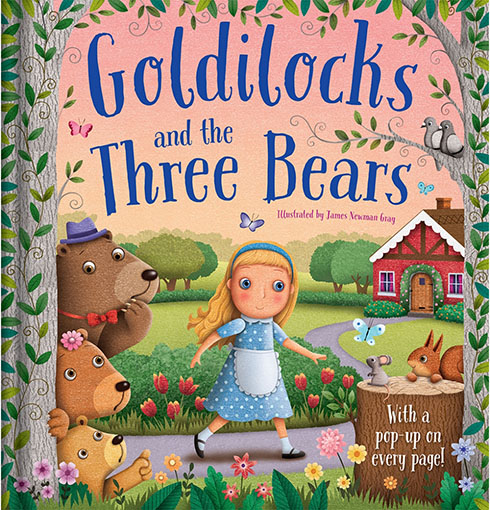
x
The idea of using different font sizes to convey the different heights and strengths of the voice of the bears belongs to Southey. Here is a copy of the first edition of The Doctor from Chatham's library, with notes and corrections by Southey himself and his son-in-law John Wood Worter: He comes up with funny names for them and describes them as good-natured, respectable and tidy owners, whose quiet life is rudely disturbed by the intrusion of an insolent tramp. Southey does not skimp on details designed to arouse the reader's dislike for the offender: a dirty and ugly old woman not only illegally enters the house of harmless gullible bears and makes a mess there, but also swears disgustingly. At the end of the tale, she is given a very harsh alternative: if she did not break her neck by jumping out of the window and perish in the forest, then she was undoubtedly captured by the constable and sent to the House of Correction.
However, this is not the most cruel version.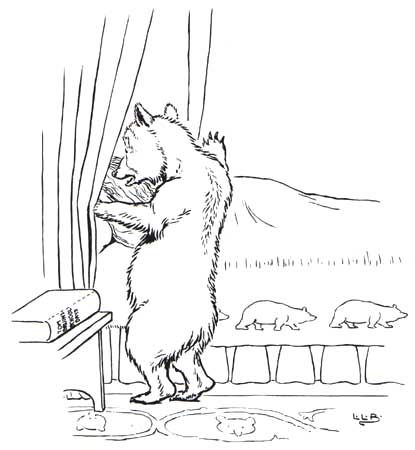 The Toronto Public Library holds Eleanor Muir's handwritten watercolor sketchbook, given as a four-year gift to her nephew Horace Broke. The manuscript is dated 1831 and contains the original interpretation of "The Story of the Three Bears" in verse. It is believed that Eleanor learned the tale from Southey, but creatively reworked it. Three bears, tired of the wild forest life in an undeveloped lair, move to the city and buy a house. What follows is a familiar story.
The Toronto Public Library holds Eleanor Muir's handwritten watercolor sketchbook, given as a four-year gift to her nephew Horace Broke. The manuscript is dated 1831 and contains the original interpretation of "The Story of the Three Bears" in verse. It is believed that Eleanor learned the tale from Southey, but creatively reworked it. Three bears, tired of the wild forest life in an undeveloped lair, move to the city and buy a house. What follows is a familiar story.
Bears in this, we recall, female version, are distinguished by terrible bloodthirstiness. Having seized the criminal old woman, they decide to put her to a cruel death. At first, the bears make unsuccessful attempts to burn and drown the unfortunate woman, but she turns out to be unusually stable - she does not burn in fire and does not sink in water. Then, in front of the astonished audience, they throw the old woman up, and she sits on the steeple of the bell tower of St. Paul's Cathedral:
On the fire they throw her, but burn her they couldn't,
In the water they put her, but drown there she wouldn't.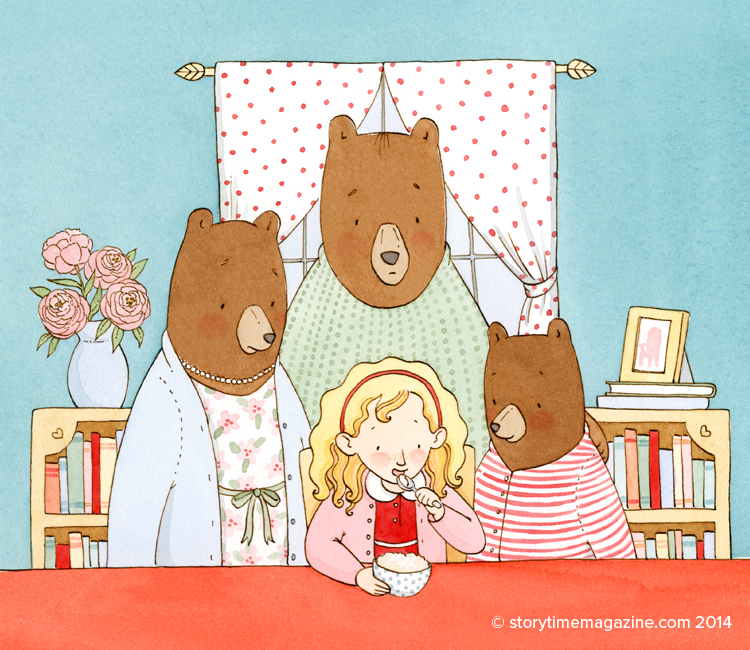
They seize her before all the wondering people
And chuck her aloft on St Paul's church-yard steeple.
x
x
First, the old woman is thrown into the fireplace:
x
This watercolor, as one might assume, depicts an attempted drowning:
x
I don’t know what destructive tendencies little Horace was that it seemed necessary to a caring aunt to frighten him with such horrors. Modern psychologists would no doubt anathematize it.
Southey's version seems to solve the mystery of the appearance of an intruder at the forest home of the bears: the wanderings of a homeless old woman look more natural than the lonely walks of a little girl. However, it highlights a new problem: why in this tale a pronounced negative character is embodied in a human form, while positive characters, in whom the features of peaceful villagers rather than wild animals are guessed, appear in the form of bears?
Be that as it may, it is clear that no "initiations" or other mythical overtones can be found in this story. The pathos of Southey's tale is completely aimed at protecting the private property of respectable inhabitants from the encroachments of marginal elements.
The pathos of Southey's tale is completely aimed at protecting the private property of respectable inhabitants from the encroachments of marginal elements.
But this effect was almost destroyed after only 12 years, when the English writer Joseph Candall included "The Tale of the Three Bears" in the collection "Treasury of Pleasure Books for Young Children", while making some changes:
""The Tale of the Three bears" is a very old tale, but it was never told so well by anyone as by the great poet Southey, whose version (with his permission) I share with you. Only it is a little girl who invades my house, not an old woman. I did so, because I find the Silver-haired version better known, and because there are already so many other stories about old women." (x)
All negative characteristics of the intruder have been purged from the text, leaving only the instructive remark "If she were a good little girl, she would have waited until the bears came home." And, of course, she doesn't swear like a bad old woman.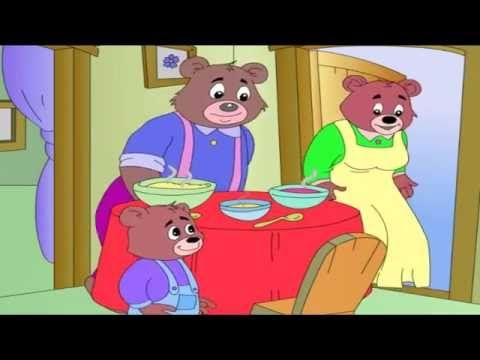
Artist Harrison Weir, illustrations hand-coloured:
"Silverweather's pretty head lay on the pillow - and she was out of place, because she had nothing to do there."
The end of the tale takes on the brevity we know: "Our little Silverhair jumped out of the window and ran into the woods, and the bears never saw her again." This is how the fairy tale ends with Tolstoy.
Another puzzling detail. Tolstoy and Spirin say: "the girl went to another room ..." (bedroom). But in the English original, it is clearly stated everywhere that the old woman or girl "went upstairs to the bedroom." The bears were wealthy, their house was two-story, and the bedroom, as usual, was located on the second floor. It turns out that both the old woman and Silverweasel had amazing parkour training, and it didn’t cost them anything to jump out the window from a full-fledged second floor like that! In cartoons, by the way, this moment is often removed, and the girl simply runs down the stairs while the dumbfounded bears stand with their mittens open.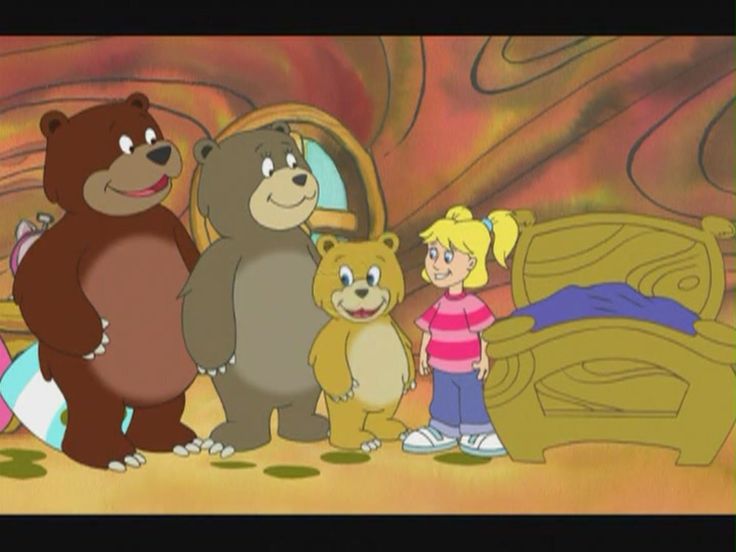
It is believed that in the silver color of the girl's hair there was still a hint of the gray hair of the old woman, but over time she turned into Goldilocks (Golden Hair in the 1868 edition; from 1904 the name Goldilocks was assigned to her - Golden curls).
Along the way, the situation with the bears changed in a curious way.
According to Wikipedia, in the illustration for the fairy tale "Three Bears" in the book "Aunt Fanny's Stories", published in 1852, bears were first depicted as a family (father, mother and son), although there is no hint of this in the text - moreover, the bears generally live separately there, each in his own house of the appropriate size. But in the digitized version there is no illustration for this tale (perhaps the pasted sheet with the illustration in the copy from which the digitization was made was lost). But there is a funny note under the asterisk: it is recommended to read the tale aloud with appropriate voice changes when the narrator reads on behalf of the bears.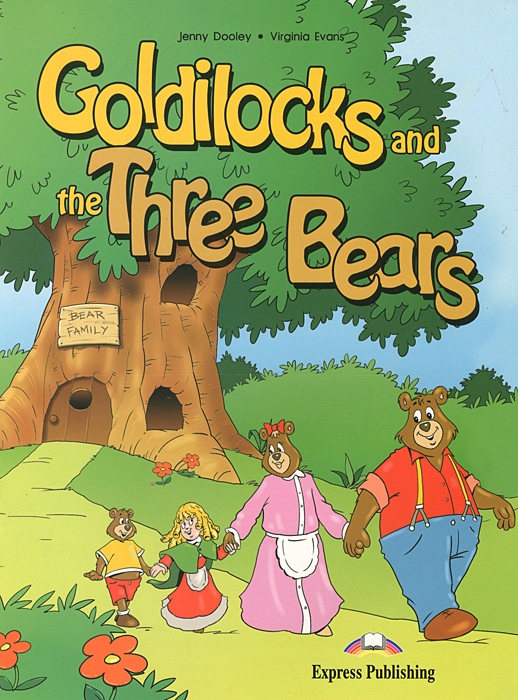
Here again the bears are invaded not by a girl, but by a dirty old ragamuffin. Entering first into the largest house, she restricts herself to tasting porridge, then goes to the middle house standing next to it, and finally, to the small one. There she creates further outrages. Thus, the chairs and beds of the big and medium bears remain intact, and all the ruin falls to the share of the small bear. He becomes furious and calls his neighbors; the three of them go up to the bedroom and find an old woman there with a mouth stained with porridge, who "snored like a trumpeter". Waking up and seeing three bears, the old woman "feared mad" and jumped out the open window near the bed.
In this version, the bears are no longer as graciously depicted as in Southey: they roll head over heels down the stairs at breakneck speed and try to catch up with the old woman, intending to eat her, but they do not succeed because they were too fat and could not run as fast as a brisk old ragamuffin, who was only slightly out of breath, but remained unharmed)
There is a version in which two big bears are brother and sister and are friends with a small bear. But in the end, in 1860, they turn into a traditional family: father bear, mother bear and little bear son. In this form, the tale is borrowed by Leo Tolstoy.
But in the end, in 1860, they turn into a traditional family: father bear, mother bear and little bear son. In this form, the tale is borrowed by Leo Tolstoy.
What was the source of the story told by Robert Southey?
In 1894 More English Fairy Tales was published with illustrations by John D. Batten. The author of the collection, folklorist Joseph Jacobs, believed that one of the tales included in it, which Batten told him, is the original oral version of The Story of the Three Bears.
x
In this Scottish tale, it is not a girl or an old woman who invades the bears' house, but suddenly a fox named Scrapefoot (Scrapefoot). He does it out of pure curiosity.
Here the bears appear not as good-natured bumpkins, but formidable masters of the forest, they even live not just in a house, but in a castle. The fox is very afraid of them, but curiosity still overpowers, and making sure that the bears are not at home, he carefully climbs inside. And then everything goes according to the known scheme.
When the bears discover the insolent, they wonder what to do with him. The big bear offers to hang it, the middle one - to drown it, and the small one - to simply throw it out of the window, which they do, apparently deciding that this is the least energy-consuming way.
As you can see from the title, in this version the main character is a fox. The bears here are impersonal and practically devoid of characteristics (with the exception of size), their actions are said extremely sparingly: they lived, came home, entered the hall, said, began to think what to do with it. But everything that concerns the fox is described so vividly and funny that it is impossible not to sympathize with this frivolous prankster. Before the reader's eyes there are hilarious pictures: how he looks around to make sure there is no one nearby; how he sneaks up to the doors and, finding to his joy that they are not locked, cautiously sticks his nose in there, and then his paws - one at a time; how he turns on uncomfortable seats and beds; how he tries to collect a collapsed chair; how he forgets about caution, roaring in warmth and comfort.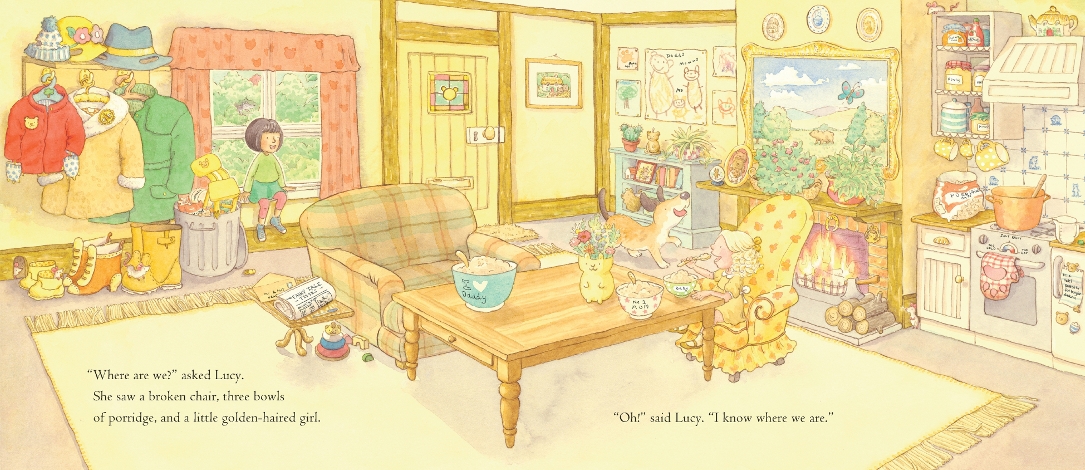 In the finale, the poor fellow shakes his paws in horror to make sure that they are not broken, and flies home with all his might. The adventure ended relatively well for him, but he is so frightened that he no longer thinks of approaching the bear's house.
In the finale, the poor fellow shakes his paws in horror to make sure that they are not broken, and flies home with all his might. The adventure ended relatively well for him, but he is so frightened that he no longer thinks of approaching the bear's house.
The last mystery remains: how did the fox turn into an untidy little old woman?
It has been established that Robert Southey may have heard the story of the fox and the bears as a child from his uncle William Tyler, who was an excellent storyteller and excellent at imitating animal voices (Souty may have recalled his lively manner when trying to convey the difference in the voices of bears in type). If Tyler was telling a fairy tale that featured not a fox, but a fox - vixen, then little Robert could understand this word in its figurative meaning - a grumpy woman. The riddle of the old parkour woman is also resolved: having made the bears unambiguously positive characters, Southey could no longer make them throw the old woman out of the window, despite all her sins, and she, and after her and the girl who replaced her, had to jump from the second floor on their own.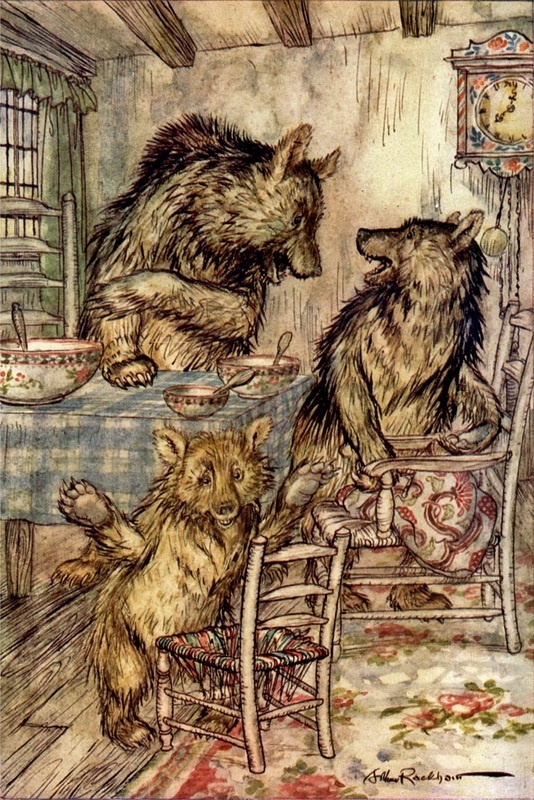
So everything falls into place. Initially, this is a fairy tale about a rogue and a rogue fox, who gets into trouble, but successfully gets out of them, quite in line with the folklore tradition. Southey pretty much reworked it, shifting the focus and turning it into an edifying story with a clear emphasis on positive and negative characters. Replacing the unpleasant old woman with a little girl returned an intriguing ambivalence to the tale: despite sympathy for the affected bear family, especially the little bear cub, readers cannot but empathize with the ill-mannered girl - after all, she is just a child who got into trouble due to inexperience.
Finally, there is one more interesting point in this tale, which Western researchers have long paid attention to. When a girl tries porridge, in the first bowl it turns out to be too hot, in the second - too cold, and only in the third, small - not hot and not cold, but "just right" - "just right". Although it would seem that porridge poured into bowls at the same time should cool at about the same speed.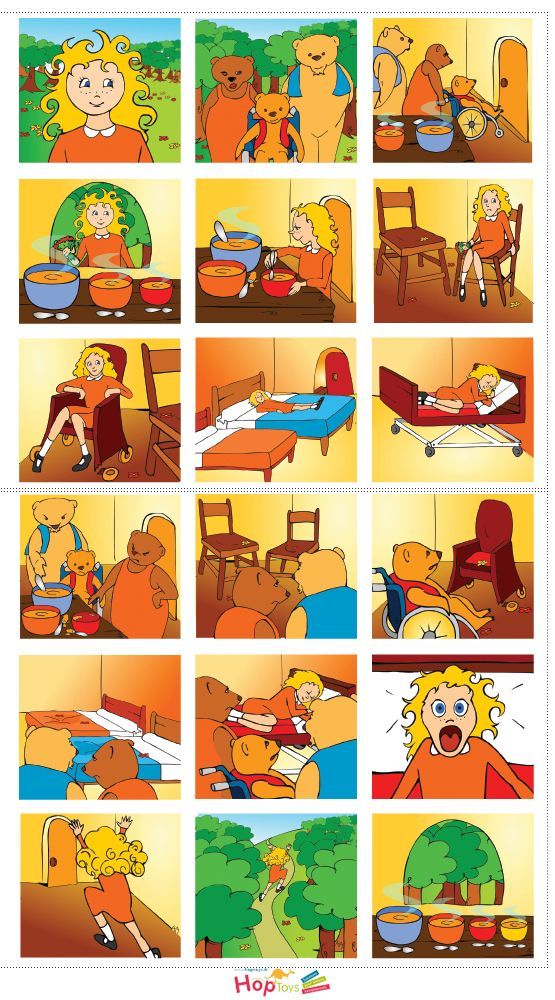 But the matter is in principle, which also works with other objects: one chair turns out to be too hard, the second one is too soft, and only the third, small one, is just right. The same thing happens with beds.
But the matter is in principle, which also works with other objects: one chair turns out to be too hard, the second one is too soft, and only the third, small one, is just right. The same thing happens with beds.
This effect of the greatest comfort of an average object is called the Goldilocks principle. It is used in various fields of many sciences: economics, medicine, astrobiology, psychology, communication theory. For example, in order for the planet to have favorable conditions for the emergence of life, it should not be too close or too far from the star, but at a distance that will be just right. This principle is used in teaching: in order for children, and adults too, to maintain the highest level of interest, new knowledge must be introduced in moderate portions. No one is interested in chewing on what has already been learned, but even completely unfamiliar material can scare away, seem too complicated and incomprehensible, so the new is given by elements based on the well-known.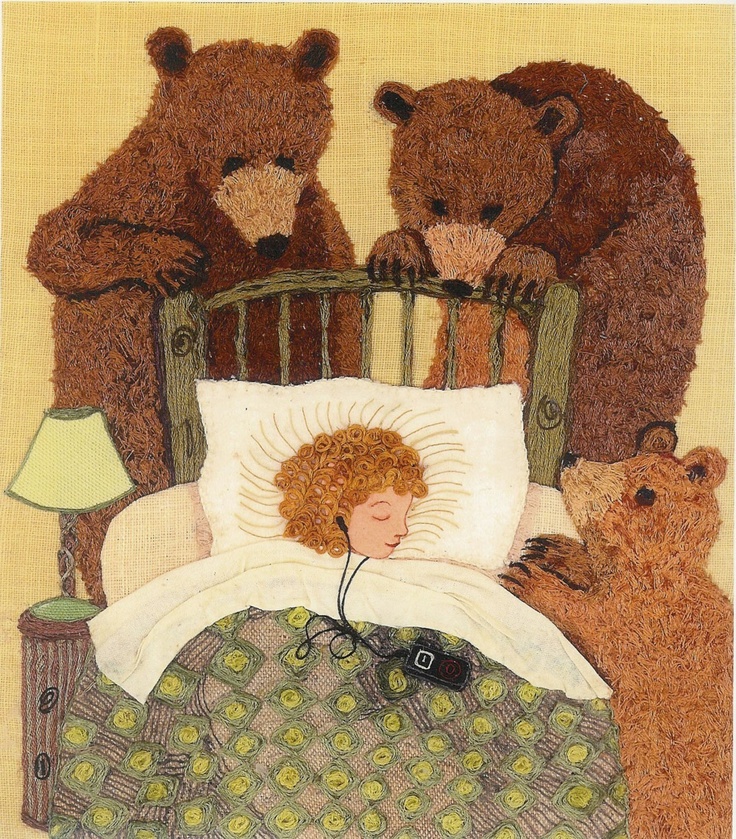 The tale of Goldilocks helps English kids learn the concept of just right.
The tale of Goldilocks helps English kids learn the concept of just right.
It is curious that for the first time the "principle of Goldilocks" is recorded in Southey's version: it does not exist in the fairy tale about the fox, as well as in Tolstoy's version. So our children have to get an idea of the golden mean from other sources.
Russian text "The Story of the Three Bears" and "Scrapefoot"
Collection of illustrations for different versions of the fairy tale
Collection of modern interpretations
Three bears and...: ru_psiholog — LiveJournal
The discussion turned out to be very interesting, I did not even imagine that it was possible to find so many original interpretations of this fairy tale!
The problem of the fairy tale "Three Bears" is that outwardly it is very reminiscent of "initiation tales", in which a girl (or children) finds herself in a deep forest, ends up in the house of a bear (Baba Yaga, a witch, Mrs. Metelitsa, Morozko and other formidable and frightening creatures) and must pass the test, showing her best qualities - and receiving an award, after which she returns home in a new capacity.
Sometimes, along with a positive heroine in a fairy tale, there is her negative half-sister, who behaves inappropriately, that is, she does not pass the test and receives punishment.
A typical example can be seen in this cartoon, where two sisters in turn end up in the house of a bear:
However, in the fairy tale "Three Bears" the heroine behaves more like a "bad sister" - but does not receive any punishment.
In addition, she is impersonal: nothing is said about her, she does not even have a name; it is not known how and why she got into the forest and where she went after. It is not clear whether the girl is a positive heroine or a negative one. Some astute commentators have noticed trickster ears sticking out in this tale)
Leo Tolstoy retold the famous English fairy tale "Goldilocks and the Three Bears", while slightly shortening it and Russifying it: the bears got Russian names (they are nameless in the classic English version), but the girl lost her name.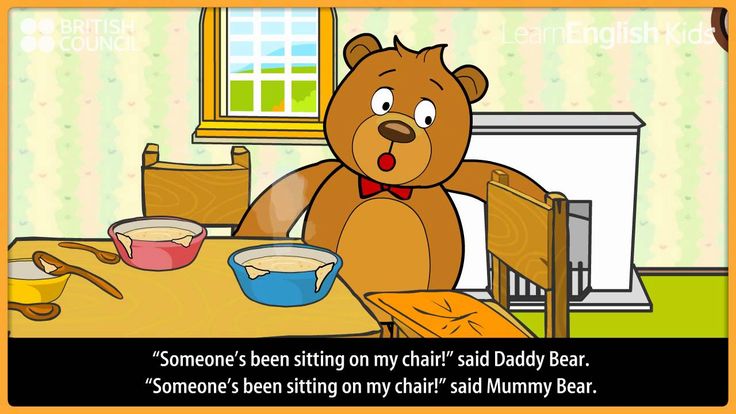 But this does not give a clue, since Tolstoy did not change anything by and large: Goldilocks, in the same way, appears in the English forest from nowhere and disappears at the end of nowhere. Moreover, in the English version, she "goes upstairs to the bedroom" (since the bedrooms in the English house are located on the second floor) and thus jumps out the second floor window, after which she runs away as if nothing had happened - what a miracle girl !
But this does not give a clue, since Tolstoy did not change anything by and large: Goldilocks, in the same way, appears in the English forest from nowhere and disappears at the end of nowhere. Moreover, in the English version, she "goes upstairs to the bedroom" (since the bedrooms in the English house are located on the second floor) and thus jumps out the second floor window, after which she runs away as if nothing had happened - what a miracle girl !
The tale of the three bears was first published in 1837 in the collection "The Doctor" in a literary adaptation of the English writer and poet Robert Southey under the title "The Story of the Three Bears".
Bears - large, medium and small - were not a family in this story, but simply three friends who lived together.
But the most interesting thing is that the uninvited guest who invaded their house was not a little girl at all, but a disgusting old woman.
All Southey's sympathies are clearly on the side of the bears: he describes them as good-natured, respectable and tidy owners, whose quiet life is grossly disturbed by the intrusion of an impudent tramp.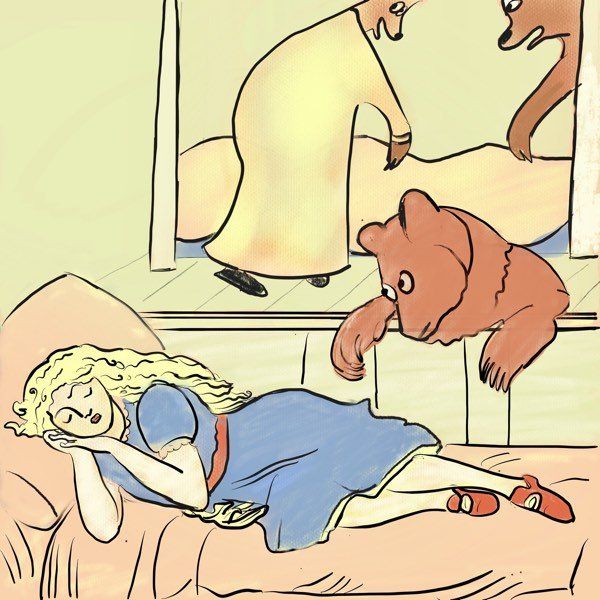 Southey does not skimp on details designed to arouse the reader's dislike for the intruder: a dirty and ugly old woman not only illegally enters the house of harmless gullible bears and makes a mess there, but also swears disgustingly. At the end of the tale, she is given a very harsh alternative: if she did not break her neck by jumping out of the window and perish in the forest, then she was undoubtedly captured by the constable and sent to the house of correction. However, the narrator honestly admits that these are only his assumptions, and the real fate of the old woman is not known to him.
Southey does not skimp on details designed to arouse the reader's dislike for the intruder: a dirty and ugly old woman not only illegally enters the house of harmless gullible bears and makes a mess there, but also swears disgustingly. At the end of the tale, she is given a very harsh alternative: if she did not break her neck by jumping out of the window and perish in the forest, then she was undoubtedly captured by the constable and sent to the house of correction. However, the narrator honestly admits that these are only his assumptions, and the real fate of the old woman is not known to him.
However, this is not the most violent version. Eleanor Muir's handwritten watercolor sketchbook, given as a four-year present to her nephew Horace, is in the Toronto Public Library. The manuscript is dated 1831 and contains the original interpretation of "The Story of the Three Bears" in verse. It is believed that Eleanor learned the tale from Southey, but creatively reworked it. Three bears, tired of the wild forest life in an undeveloped lair, move to the city and buy a house.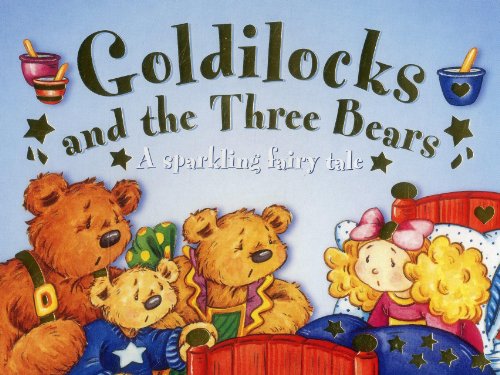 What follows is a familiar story.
What follows is a familiar story.
Bears in this, we recall, female version, are distinguished by terrible bloodthirstiness. Having seized the criminal old woman, they decide to put her to a cruel death. At first, the bears make unsuccessful attempts to burn and drown the unfortunate woman, but she turns out to be unusually stable - she does not burn in fire and does not sink in water. Then, in front of the astonished audience, they throw the old woman up, and she sits on the steeple of the bell tower of St. Paul's Cathedral. I don’t know what destructive tendencies little Horace was that it seemed necessary to a caring aunt to frighten him with such horrors. Modern psychologists would no doubt anathematize it.
Southey's version seems to solve the mystery of the appearance of an intruder at the bears' forest house: the wanderings of a homeless old woman look more natural than the lonely walks of a little girl. However, it highlights a new problem: why in this tale a pronounced negative character is embodied in a human form, while positive characters, in whom the features of peaceful villagers rather than wild animals are guessed, appear in the form of bears?
Be that as it may, it is clear that no "initiations" or other mythical overtones can be found in this story. The pathos of Southey's tale is completely aimed at protecting the private property of respectable inhabitants from the encroachments of marginal elements.
The pathos of Southey's tale is completely aimed at protecting the private property of respectable inhabitants from the encroachments of marginal elements.
But this effect was almost destroyed after only 12 years, when the English writer Joseph Candall included "The Tale of the Three Bears" in a children's collection, with some changes, because he decided that it would be more interesting for children if the heroine was a girl named Silverhair, not an old woman.
All negative characteristics of the intruder have been purged from the text - only the instructive remark "If she were a good little girl, she would have waited until the bears came home" was left. And, of course, she doesn't swear like a bad old woman. The end of the tale takes on the brevity we know: "Our little Silverweasel jumped out of the window and ran into the woods, and the bears never saw her again." This is how the fairy tale ends with Tolstoy. It is believed that in the girl's silver hair color there was still a hint of the old woman's gray hair, but over time she turned into Goldilocks, and the bear friends became a family.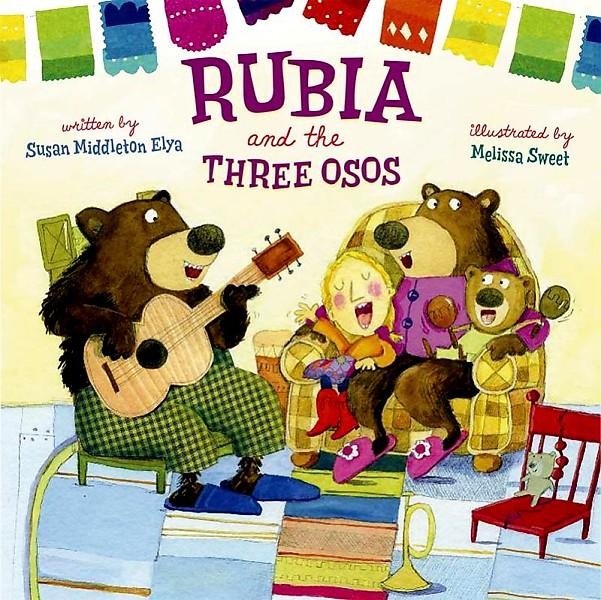
What was the source of the story told by Robert Southey? Probably the original original version was the Scottish tale Scratchypaw and the Three Bears. In it, it is not a girl or an old woman who invades the bears' house, but a fox (or a fox) named Scrapefoot (Scrapefoot).
Here the bears appear not as good-natured bumpkins, but formidable masters of the forest, they even live not just in a house, but in a castle. The fox is very afraid of them, but curiosity still overpowers, and making sure that the bears are not at home, he carefully climbs inside. And then everything goes according to the known scheme.
When the bears discover the insolent, they wonder what to do with him. The big bear offers to hang it, the middle one - to drown it, and the small one - to simply throw it out of the window, which they do, apparently deciding that this is the least energy-consuming way.
In this version, the main character is a fox. The bears here are impersonal and practically devoid of characteristics (with the exception of size), their actions are said extremely sparingly: they lived, came home, entered the hall, said, began to think what to do with it.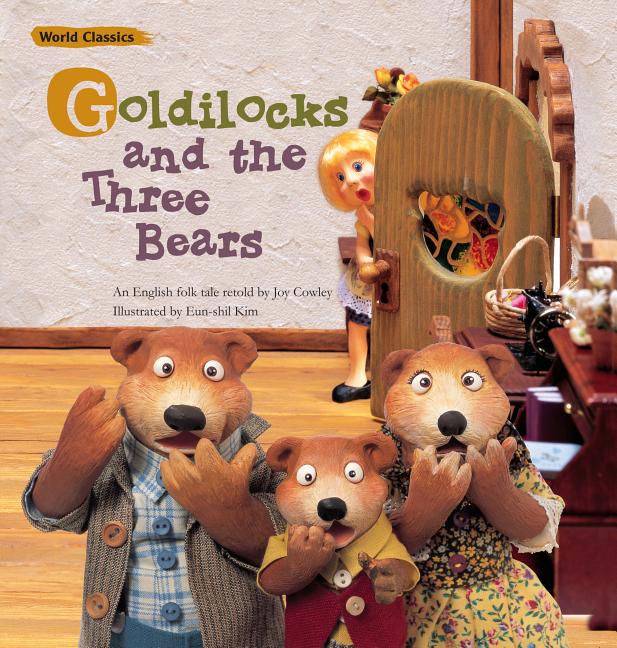 But everything that concerns the fox is described so vividly and funny that it is impossible not to sympathize with this frivolous prankster. Before the reader's eyes there are hilarious pictures: how he looks around to make sure there is no one nearby; how he sneaks up to the doors and, finding to his joy that they are not locked, cautiously sticks his nose in there, and then his paws - one at a time; how he turns on uncomfortable seats and beds; how he tries to collect a collapsed chair; how he forgets about caution, roaring in warmth and comfort. In the finale, the poor fellow shakes his paws in horror to make sure that they are not broken, and flies home with all his might. The adventure ended relatively well for him, but he is so frightened that he no longer thinks of approaching the bear's house.
But everything that concerns the fox is described so vividly and funny that it is impossible not to sympathize with this frivolous prankster. Before the reader's eyes there are hilarious pictures: how he looks around to make sure there is no one nearby; how he sneaks up to the doors and, finding to his joy that they are not locked, cautiously sticks his nose in there, and then his paws - one at a time; how he turns on uncomfortable seats and beds; how he tries to collect a collapsed chair; how he forgets about caution, roaring in warmth and comfort. In the finale, the poor fellow shakes his paws in horror to make sure that they are not broken, and flies home with all his might. The adventure ended relatively well for him, but he is so frightened that he no longer thinks of approaching the bear's house.
The last mystery remains: how did the fox turn into an untidy little old woman?
It has been established that Robert Southey could have heard the story of the fox and bears as a child from his uncle William Tyler, who was an excellent storyteller and could imitate the voices of animals unsurpassed (maybe Southey recalled his lively manner when he tried to convey in type the difference in the voices of bears - the idea use a font of different sizes for the replicas of bears belongs to him).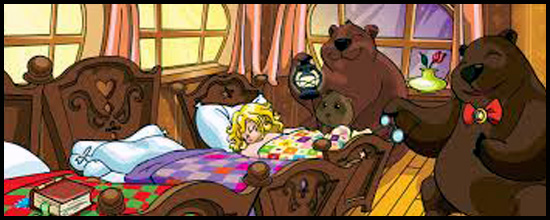 If Tyler was telling a fairy tale in which not a fox appeared, but a fox - vixen, then little Robert could understand this word in its figurative meaning - a grumpy woman, a vixen. The riddle of the parkour girl is also resolved: having made the bears unambiguously positive characters, Southey could no longer make them throw the old woman out of the window, despite all her sins, and she, and after her and the girl who replaced her, had to jump from the second floor on their own.
If Tyler was telling a fairy tale in which not a fox appeared, but a fox - vixen, then little Robert could understand this word in its figurative meaning - a grumpy woman, a vixen. The riddle of the parkour girl is also resolved: having made the bears unambiguously positive characters, Southey could no longer make them throw the old woman out of the window, despite all her sins, and she, and after her and the girl who replaced her, had to jump from the second floor on their own.
So everything falls into place. Initially, this is a fairy tale about a rogue and a rogue fox, who gets into trouble, but successfully gets out of them, quite in line with the folklore tradition. Southey pretty much reworked it, shifting the focus and turning it into an edifying story with a clear emphasis on positive and negative characters. Replacing the unpleasant old woman with a little girl returned an intriguing ambivalence to the tale: despite sympathy for the affected bear family, especially the little bear cub, readers cannot but empathize with the ill-mannered girl - after all, she is just a child who got into trouble due to inexperience.